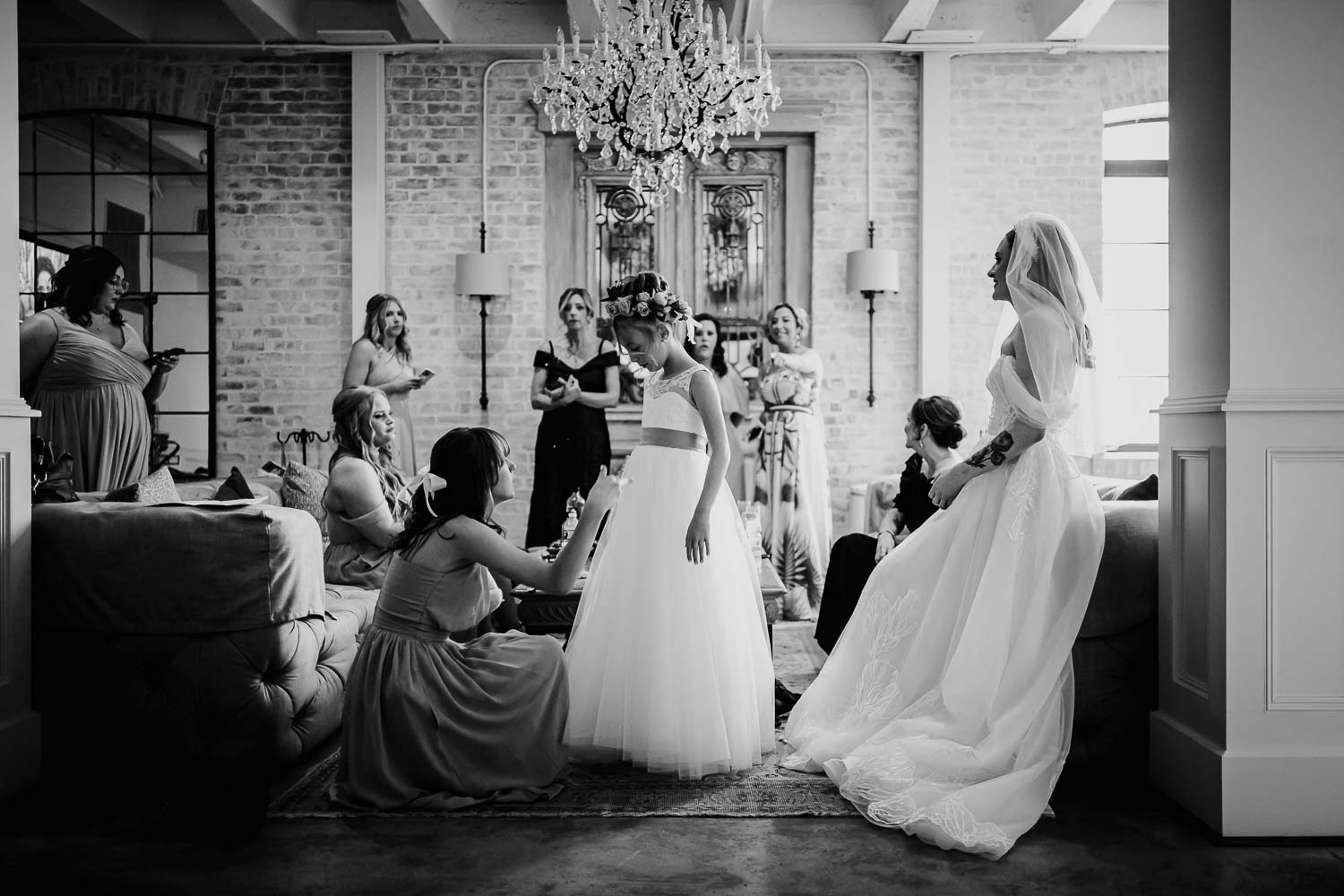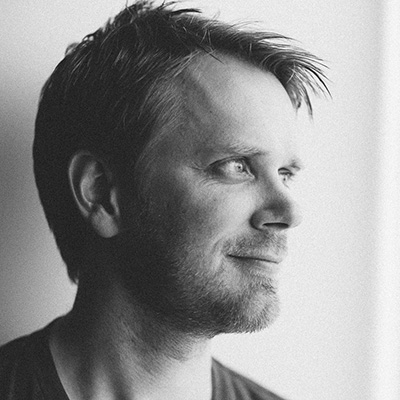Capture Your Favorite Image with Decisive Moment Techniques

I keep returning to this image as my favorite of the month, so it would be fun to restart the series, examining how I captured the image and why I like it.
I’ve always been intrigued by the decisive moments, the idea coined by Henri Cartier-Bresson. I didn’t start to grasp the concepts of the decisive moment until around 2009. Bresson spoke about how the elements of an image come together in a fraction of a second and how a picture’s composition can have a rhythm whereby all the elements allow the eye to follow the image.
This photo is one of those images where the elements in the image come together at the right place and at the right time. The bride, flower girls, bridesmaids, body positions, composition, and light all happened without the girls being aware of the camera.
The main subject(s) is the flower girl and bride perched to the right. They have a lovely FGR – or figure-to-ground relationship, with a bridesmaid kneeling before the flower girl fixing her dress. Think of FGR as a line running around the subject and see if it fits within the background. For example, if I had framed the image 2/3 of the frame, the image would have felt out of balance with their legs cut off.
As I was composing the image in real-time, I noticed the ‘gazing direction’ of the bride and the bridesmaid on the far left, careful not to have distracting elements around the edge of the frame. This element is what we call ‘edge flicker.’
I also had to keep the flower girl dead center and the chandelier hanging from the ceiling to create a sense of balance. Think of the flower girl, in this case, acting as a fulcrum along the bottom of the frame. By ending the other elements like the bride on the right, the other bridesmaids on the left are the counterweight.
I couldn’t have captured this image without patience and a quiet approach. As I approach 50 years old this September and a lovely summer break from weddings, I realize how important it is to continue to develop my skills and knowledge of art and design. For years, I’ve talked and written about my unobtrusive style of working and the parallels between street photography and weddings. My work is better the less intrusive I am, and the clients attracted to that style feel more rewarded with the images.
Yes, today’s hyper-fast approach offers many wonderful ways to learn and study photography. For me, one of the fundamentals are photography books and online educational sites like Canon of Design. The site sits behind a paywall, but there are many free articles to help and tons of videos on YouTube and social media.
Until next month, I hope this helps you. Feel free to leave comments, and if you have any questions, I’ll happily answer.

